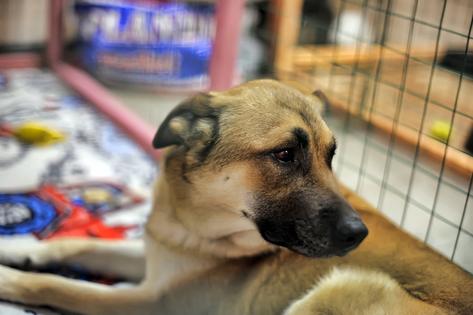My Pet World: Helping a clingy dog feel safe when left alone
Dear Cathy,
I have a friend with a two-year-old miniature schnauzer he’s had since puppyhood. He installed a camera in his room to check on the dog while he’s away, but no matter how briefly he leaves – even just to run to the store – the dog starts crying and won’t stop until he returns.
As a result, he takes the dog everywhere, even to doctor’s appointments.
My friend rents a room in a house with a landlord and another tenant. Although his dog gets along well with the landlord’s dog, he still cries whenever his owner leaves. My friend currently works from home, but he’ll eventually need a job outside the house.
I’ve told him this issue needs to be addressed soon, as it’s already affecting his social life and could create problems with the landlord once his schedule changes. He loves his dog dearly and wants to do the right thing, but doesn’t know where to begin.
What’s the best way for him to start training his dog to stop crying when left alone? The dog is sweet, playful, and friendly with everyone, but immediately becomes anxious the moment his owner is out of sight.
– Rick, Oakdale, New York
Dear Rick,
It sounds like your friend's miniature schnauzer struggles with separation anxiety, a common issue in dogs who form strong attachments to their people. While it's completely understandable that your friend wants to be with his dog all the time, that constant togetherness can make things harder for the dog in the long run.
Separation anxiety often shows up as whining, barking, pacing, or destructive behavior when the dog is left alone, and if left unaddressed, it can grow worse over time. The good news is that dogs can learn to feel OK when their people aren't around with some simple, consistent steps.
Encourage your friend to begin with short absences, just stepping out of the house for a minute or two so the dog learns that being alone doesn't mean being abandoned. It's also important that your friend avoids making departures or returns a big production.
Calm comings and goings help prevent that spike in anxiety we sometimes see when a dog connects keys jingling, or a goodbye hug with panic. I often tell pet owners: When you leave, leave – no drama, no fanfare. When you return, give your dog a few minutes to settle before offering a warm greeting – and keep it low-key, nothing too enthusiastic.
Creating a cozy, predictable space for the dog can also help, like a favorite blanket, some familiar toys, maybe a food puzzle, or a frozen Kong with peanut butter. These little comforts go a long way in helping dogs self-soothe.
When your friend is home, he can begin encouraging independence by having the dog spend time in a different room or rest in a nearby crate while he moves around the house. Even practicing picking up his keys or putting on shoes without leaving the home can help desensitize the dog to those departure cues.
There are also some wonderful calming aids on the market, like pheromone diffusers and collars, anxiety wraps like the Thundershirt™ or Anxiety Wrap™, and even white noise or soft music that can make a home feel more secure when the dog is alone.
If your friend ever needs to leave the house regularly, whether for work, errands, or travel, helping his dog learn to be alone now will make that transition much easier. With consistent effort, his schnauzer can learn that being alone isn't scary, and your friend will feel more freedom, knowing his dog is safe and secure while he's away.
Dear Cathy,
In the past, you’ve written about not declawing cats – and I couldn’t agree more. It’s barbaric. I’ve seen firsthand the harm it can cause: One friend’s kitten began sucking her tail, and another’s adult cat became aggressive.
My cats have plenty of scratching options, including different textures, heights, and surfaces, including rope, carpet, and cardboard on posts and flat areas. I also don’t believe in docking tails or cropping ears.
— Marcee, Las Vegas, Nevada
Dear Marcee,
Your choice to adapt your space instead of altering your pets is a beautiful example of compassionate care-giving. Like you, I believe animals should be left as nature intended them to be – claws, ears, tails, and all.
Thank you for sharing your story and for being such a kind advocate for cats. Your creative approach to providing scratching alternatives using various textures, shapes, and surfaces offers exactly the kind of enrichment cats need. It not only protects your home, but honors who they are.
_____
_____
========
(Cathy M. Rosenthal is a longtime animal advocate, author, columnist and pet expert who has more than 25 years in the animal welfare field. Send your pet questions, stories and tips to cathy@petpundit.com. Please include your name, city, and state. You can follow her @cathymrosenthal.)
©2025 Tribune Content Agency, LLC.
(c) 2025 DISTRIBUTED BY TRIBUNE MEDIA SERVICES, INC.












Comments